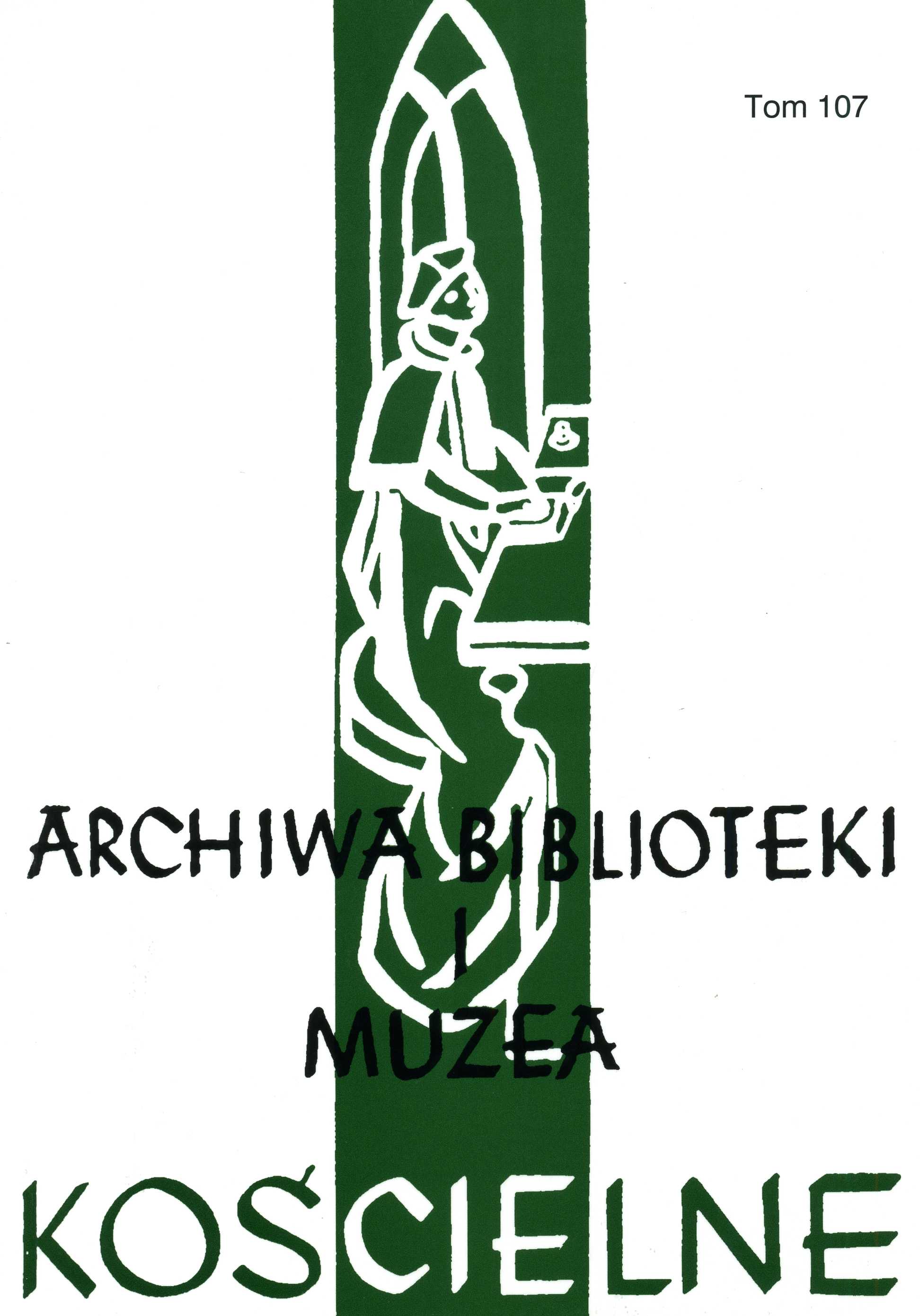Parafia i kościoły w Abramowicach w XVIII-XIX wieku
The Parish and Churches in Abramowice in the 18th and 19th Centuries
Author(s): Artur Paweł Hamryszczak, Hubert MącikSubject(s): Christian Theology and Religion, History, Fine Arts / Performing Arts
Published by: Katolicki Uniwersytet Lubelski Jana Pawła II - Wydział Teologii
Keywords: Abramowice; a church; a parish; Stefan Szyller; the Lublin district
Summary/Abstract: The parish in Abramowice was mentioned for the first time in 1398, when the heir of the village, Sieciech, gave about 50 ha of unsettled land to the newly built church dedicated to The Holy Trinity, the Blessed Virgin Mary and St. James. In the Middle Ages, the parish also included neighbouring villages: Dominów, Skrzynice, Śmiłów (present Ćmiłów) and Wilczopole. In addition, the town of Głusk, after its foundation in 1687, became a part of the parish of Abramowice. In the 19th century, the following villages, from the Lublin parish, were incorporated into the Abramowice parish: Dziesiąta, Żabia Wola as well as settlements created about half of the 19th century: Kalinówka, Kliny and Kaleń. In the 20th century new parishes were established in some of these places. At present the Abramovice parish, apart from the districts of Lublin-Abramowice and Głusk, includes: Dominów and Wólka Abramowicka, located in the district of Głusk.Analysing the canonical visitations of the 18th century, it was possible to determine that the parish church in Abramowice dedicated to St. James the Greater Apostle had been built in 1674, and consecrated by the Bishop of Krakow Mikołaj Oborski the following year. It is also mentioned that originally the church was dedicated only to St. James the Great, but later other dedications were added: the Transfiguration, the Assumption and St. Adalbert. The church which have survived until today was built between 1786 and 1790 on the initiative of Rev. Wincenty Jezierski. It was consecrated in 1796 by the bishop of Chełm and Lublin Wojciech Skarszewski. The church was expanded in 1906 in accordance with the design of the famous Warsaw architect Stefan Szyller. Among other buildings which have survived are the neo-gothic bell tower and morgue, dating back to the end of the 19th century, and the presbytery of the years 1727-1728, expanded at the end of the 18th century, with a monumental six-column portico.
Journal: Archiwa, Biblioteki i Muzea Kościelne
- Issue Year: 2017
- Issue No: 107
- Page Range: 145-166
- Page Count: 22
- Language: Polish

